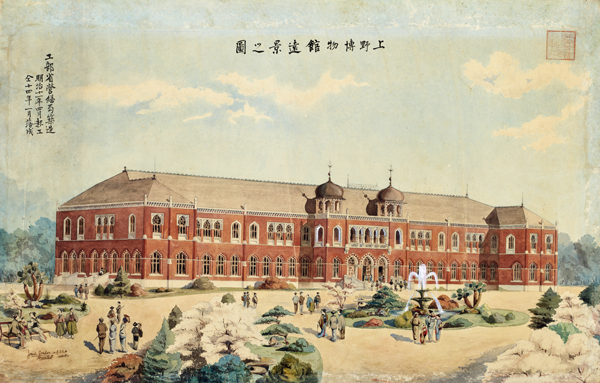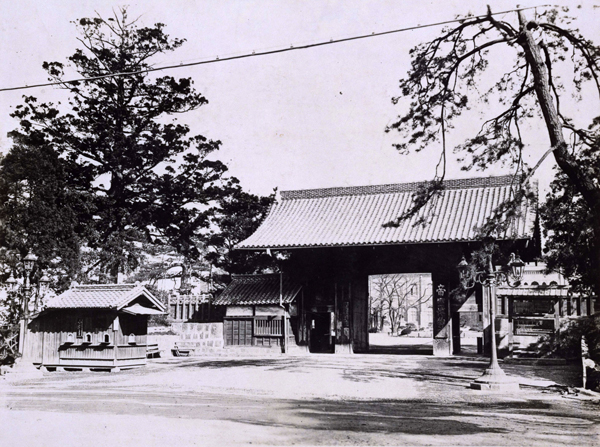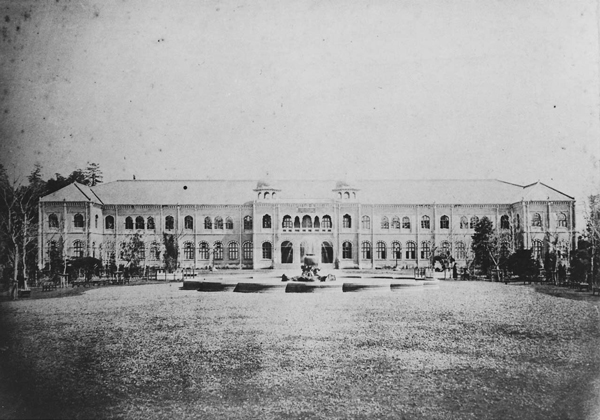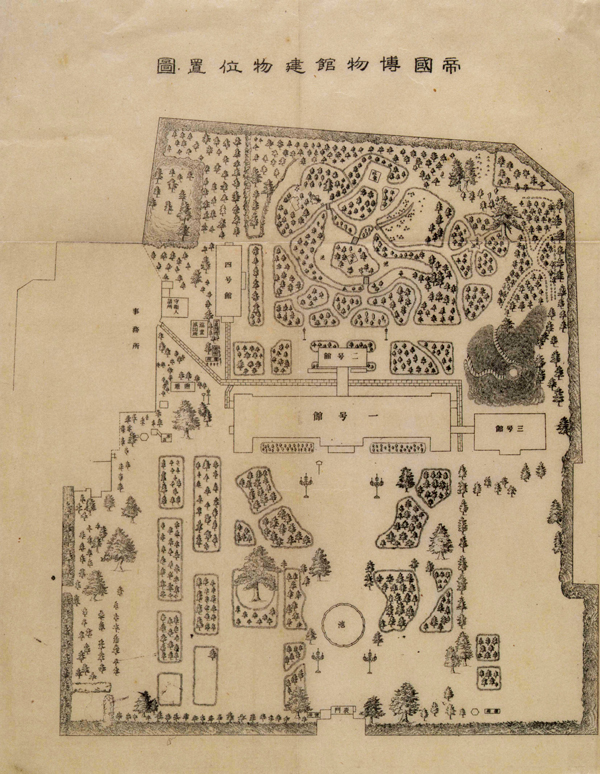7.Ueno Museum : The original Honkan

Painting of the museum by Conder
MACHIDA Hisanari (1838-1897), the first director of the Museum, planned to build an encyclopedic museum with not only collections of art, natural history and industry, but also a zoo, botanical garden and a library. So he chose the spacious vicinity of Ueno as the site for the museum and proposed the plan to the government in 1873.
The land had been owned by Kaneiji temple but its buildings were burnt to the ground in the wake of the Boshin War (1868-69). The Tokyo metropolitan government began to control the land in 1868 and opened it to the public as a park in 1873. But part of the park was occupied by two ministries, Military and Education. After that land was handed over to the Home Ministry, the Museum acquired the entire park in January 1876. In December that year, it was decided that the museum buildings were to be built at the former site of the Kaneiji temple main hall. Although it was already preparing to move from Uchiyamashita-cho to Ueno at the time, the plan to hold the National Industries Exhibition pushed that move. The exhibition held in 1877 took place in the brick art museum that had been built to house the collections after the exhibition. When the second exhibition was held in 1881, a new building (Honkan main building) was built, with its ground floor devoted to displaying artworks. Designed by English architect Josiah Conder (1852-1920), the Honkan took from 1878 to 1881 to build and it stood on the site of the present Honkan. The two-story brick building had two small decorative domes topping the center roof. The 1877 building remained as an adjoining wing.
The Ministry of Agriculture and Trade took control of the Museum in April 1881, and construction work began on the zoo. On March 20, 1882, in Emperor Meiji's presence, the Museum's main building and zoo were inaugurated, and the facilities were opened to the public immediately after the ceremony. The library at Asakusa (Asakusa Bunko) was also transferred to Ueno where it resumed its services on September 30. The comprehensive museum with its wide-ranging collection covering history, art and natural history, as well as a library and zoo, was thus established in Ueno. It was open everyday except Mondays and the year-end and New Year holidays. When the ownership was moved to the Imperial Household in 1888, the name of the museum was changed to the Imperial Museum. The Kyoto and Nara Imperial Museums were also established at this time. The Museum's long involvement with the National Industries Exhibition ended and the exhibition department at the Agriculture and Trade Ministry took over the administration.

Ueno Museum

Ueno Museum building after its completion

Museum premises in 1889
 |
 |
|||
